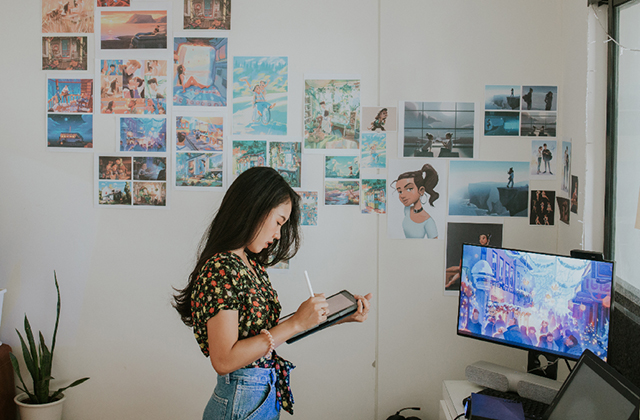Introduction
Storyboarding is a valuable tool for filmmakers, but it can also be used by marketers and business owners to create a visual representation of their ideas and how they will play out using a tv storyboard. It’s not just something that happens in Hollywood; many businesses use storyboards in their day-to-day operations. From product launches to marketing campaigns, storyboarding can help you communicate your vision by organizing everything into one cohesive whole.
What is storyboarding?
A storyboard is a visual representation of a film, television or video game. It’s used to plan the arrangement, pacing and timing of shots. It’s also used to plan how the story will unfold.
Storyboarding involves mapping out the scenes in your movie or show so that you can see where each scene needs to go before you actually start filming it. It’ll help you get an idea of what shots are needed at which points in time so that everything runs smoothly while filming.
Why is it important?
You might be wondering why storyboarding is so important and how it can help you with your video content. Storyboards are an incredibly useful tool for visualizing the best way to communicate your ideas. In fact, many of the world’s most successful films were created by storyboard artists who had years of experience communicating their ideas in a clear, concise manner through visual storytelling.
When you create a storyboard, it allows you to plan out your video before making anything at all—and this means that every scene in your script will be put into motion right away! It also helps keep track of what needs to happen next (in other words: if you’re creating an explainer video where there’s a lot happening on screen). Additionally, when used properly, storyboarding can help keep everything organized and ensure continuity between scenes so viewers have no trouble following along with what they’re seeing on screen.”
How do you get started?
How do you get started?
The first step is to think about your video from start to finish. What kind of story do you want to tell? How can you make that story more engaging for your audience? What types of shots will help establish the mood, provide context and give viewers a deeper understanding of what’s going on in each scene.
Once you’ve thought through these questions and have an idea of what kind of videos you’d like to create, it’s time to start creating them! If they’re simple enough that they don’t need storyboards, then great! Go ahead and shoot away. But if they’re complex or have numerous scenes where several elements must be combined together in order for them to work as intended (for example: an explainer video), then I highly recommend using software such as Storyboard Pro or Pencil in order ensure everything aligns properly once edited together into one cohesive piece later down the line.
The ABC’s of storyboarding.
Storyboarding is a technique that helps you plan out and visualize an event or series of events. It’s the process of creating your own storyboard, which can include writing scripts, setting up environments, and providing details about characters.
For example, let’s say you are making a presentation at work: what would be in it? How long would it last? What kind of information do you want to convey through this presentation? These are all questions that need answers before crafting your storyboard.
Storyboarding templates.
Storyboarding templates are a great place to start when you’re just starting out.
As with any creative endeavor, there are many ways to go about it—and storyboarding templates are just one of them. In this section, we’ll go over the most popular types of storyboard templates and how each can help you.
Think of a storyboard as your blueprint to ensuring that all your shots are inline with your vision and that they make sense both in the moment and as part of the larger whole.
A storyboard is a visual representation of the story you want to tell, and it helps you stay on track and ensure that your shots are in line with your vision. Most importantly, it gives you the ability to tell a cohesive, engaging story by keeping all of your shots inline.
When creating a storyboard for your marketing video (or any other type of video), keep these things in mind:
- Think of each shot as an individual scene in a movie. Your goal should be to create scenes that have purpose, flow smoothly from one scene into another, and are compelling all on their own.
- Choose images for each shot that reflect what’s happening within the frame or contain information about whatever is being shown (that’s why having good voiceover script will help).
Conclusion
Storyboarding is a powerful tool for marketers and creatives who want to ensure a consistent and cohesive message across all their media. We’ve covered the basics of storyboarding, but there’s plenty more to learn (and many more applications). If you’re feeling inspired, check out our post on how to get started with storyboarding as well! Learn from scenesbydean.com about storyboarding.

